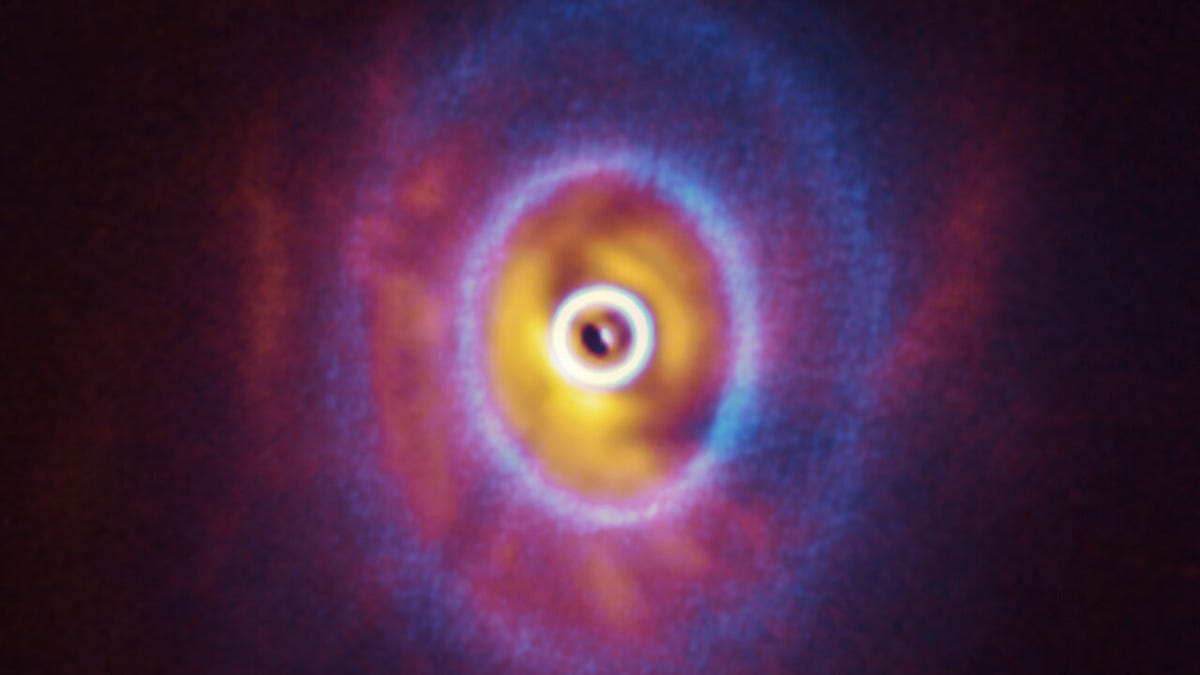Astronomers may have spotted first planet orbiting three stars
The double sunsets of Tatooine have nothing on GW Ori's triple dusk delight.

This composite image of GW Orionis comes from the European Southern Observatory's Very Large Telescope in Chile.
The GW Orionis star system, relatively nearby at a distance of just 1,300 light-years, couldn't be much more different from our solar system. GW Ori, as astronomers call it, is a triple-star system partly shrouded by dusty rings of space detritus where planets may be in the process of forming.
But new analysis of the protoplanetary cloud suggests that process may have already yielded some pretty big cosmic fruit.
Researchers led by Jeremy Smallwood, a recent Ph.D. graduate in astronomy from the University of Nevada, Las Vegas, noticed a significant and befuddling gap in the dusty discs, which are not only broken up but also warped.
"We suggest that the presence of a massive planet (or planets) in the disc separates the inner and outer discs," Smallwood and colleagues write in a paper published last month in Monthly Notices of the Royal Astronomical Society. "The disc breaking in GW Ori is likely caused by undetected planets – the first planet(s) in a circumtriple orbit."
The planets hidden within the dirty belts are likely to be gas giants like Jupiter, which tend to form earlier in the history of a system than rocky planets like Earth.
Astronomers have previously discovered planets in triple-star systems, like LTT 1445Ab that has three suns in its skies, but which only orbits one of the stars. If there are confirmed planets around GW Ori, they would be the first to be seen moving around a trio of stars.
It also means there could be a lot going on in the gravitationally bound celestial dustbins whipping around distant stars.
"It's really exciting because it makes the theory of planet formation really robust," Smallwood said in a statement. "It could mean that planet formation is much more active than we thought, which is pretty cool."
And we used to think the double sunsets on the Skywalker homestead on Tatooine were mind-blowing. Truth is always stranger than fiction.

